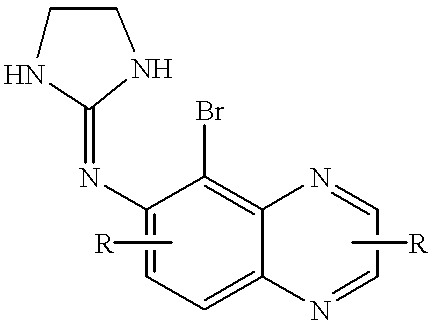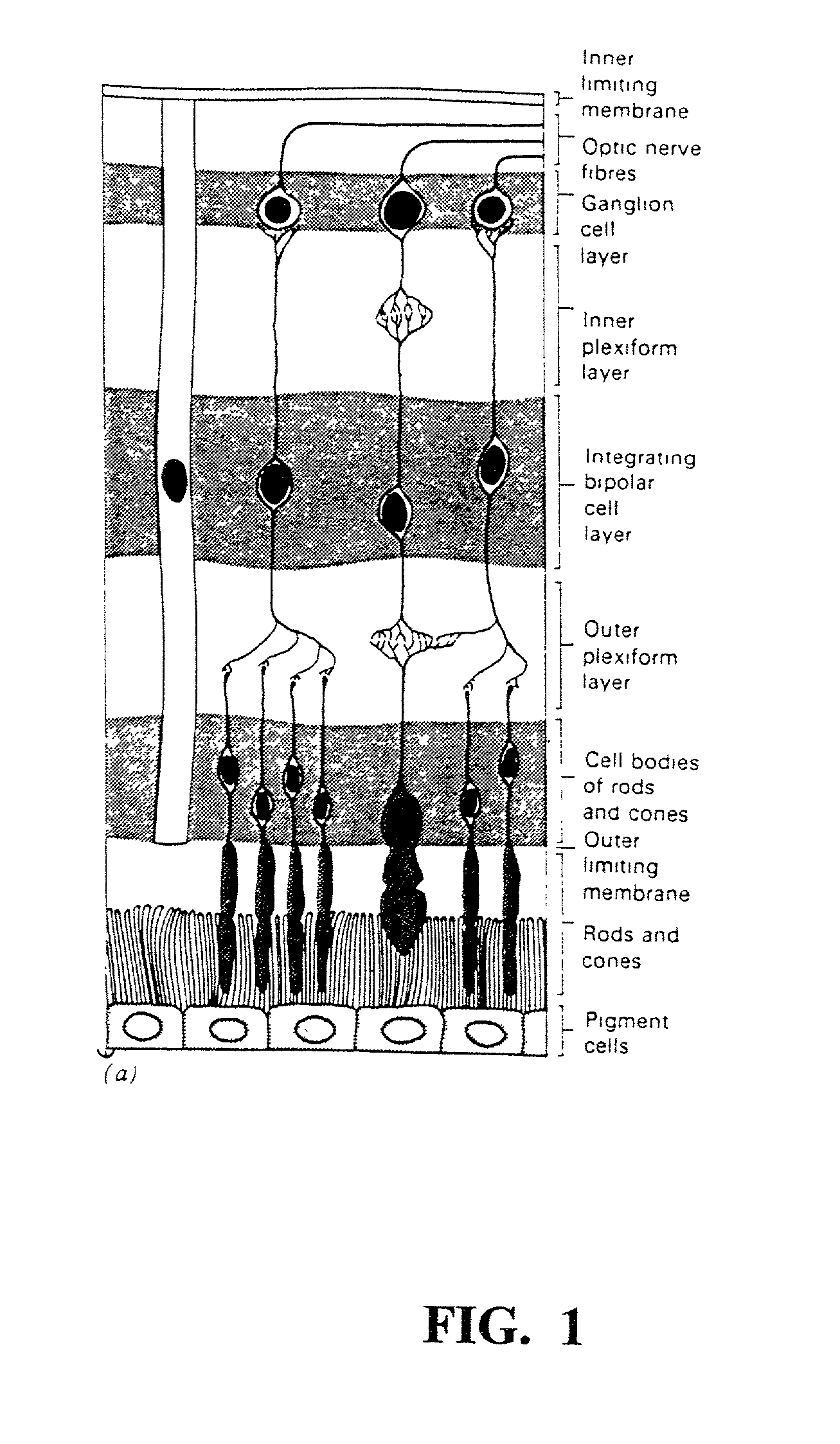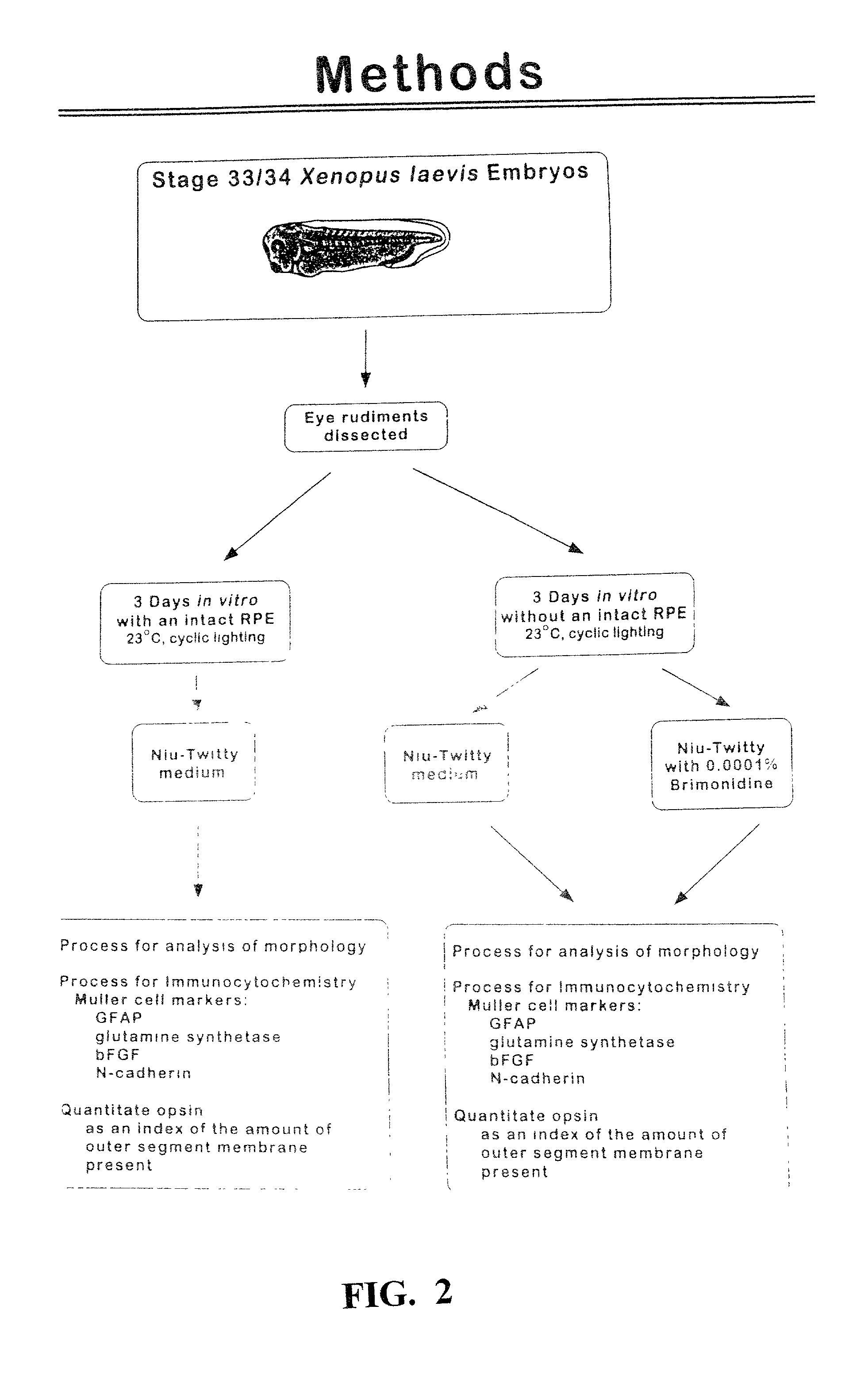Brimonidine compositions and methods for retinal degeneration
a composition and composition technology, applied in the field of high-selective alpha2-adrenoceptor agonists, can solve the problems of not addressing the potential use of alpha2-adrenoceptor agonists to mitigate retinal degeneration, not addressing the problem of treating photoreceptor cell degeneration, and not addressing the problem of blood supply to photoreceptors in circulation, etc., to achieve low incidence of side effects and increase patient complian
- Summary
- Abstract
- Description
- Claims
- Application Information
AI Technical Summary
Benefits of technology
Problems solved by technology
Method used
Image
Examples
example 1
5.1 Example 1
[0134] Regeneration of Retinal Morphology
[0135] The following studies were performed on Xenopus embryos. Briefly, eye rudiments were removed from stage 33 / 34 Xenopus embryos. The RPE was peeled from the outer retinal surface and eyes were cultured for 3 days in Niu-Twitty (NT) medium. The same experiment was performed in NT medium containing 0.001% brimonidine. Control conditions included eye rudiments cultured with the RPE and eyes allowed to mature in vivo to an equivalent developmental stage. Retinal morphology was assessed, carefully evaluating PRs and MCs.
[0136] 5.1.1 Culture of Developing Retinas
[0137] The culture preparation used in these studies has been previously described (Hollyfield, 1974; Lolley, 1977; Stiemke, 1994; Stiemke, 1995; and Jablonski, 1999). The handling of animals was in accordance with the Declaration of Helsinki and The Guiding Principles in the Care and Use of Animals (DHEW Publication, NIH 80-23). Human chorionic gonadotropin (Sigma Chemica...
example 2
5.2 Example 2
[0151] In vivo Application
[0152] Preliminary studies will be conducted in normal animals comparable to those to be studied for the in vivo model experiments in order to determine the intravitreal concentrations of brimonidine reached via topical administration. These concentrations, at the dosages utilized clinically for other applications (2% solution of brimonidine tartrate) on a twice daily regimen have been used for rabbit and primate models [450 and 100 nanomolar (nM), respectively]. Small concentrations [<15 nM in the rabbit] can reach the fellow eye via the systemic circulation. The intraocular concentration is likely to be inversely proportional to the surface area available for absorption. Therefore, the mouse eye (a convenient model) is expected to reach concentrations approximately 10 times higher than the primate eye (considered by analogy comparable to the human eye). Once verified, the dosage of brimonidine in eyedrops will be adjusted accordingly (10:1 di...
example 3
5.3 Example 3
[0157] In Vivo Retinal Degeneration
[0158] This example illustrates the advantages of the route of administration, which is preferably topical in the form of eye drops. This provides several advantages, both at the preclinical level and for a potential clinical treatment trial.
[0159] The ease of administration, as opposed to intramuscular, intravenous, intraperitoneal, and subcutaneous routes, is immediately apparent. This is advantageous also over the oral (per os) administration, which also may have lower compliance. Most importantly, the topical route would allow the use of far smaller doses of the drug that would be required per any systemic route. This, in addition to the prevailing absorption of the drug through the cornea, minimizes the systemic side effects of the drug of choice.
[0160] Another significant advantage of this route applies to the proposed treatment of genetically determined retinal degenerations. These diseases affect both eyes, typically in a symme...
PUM
| Property | Measurement | Unit |
|---|---|---|
| pH | aaaaa | aaaaa |
| pH | aaaaa | aaaaa |
| pH | aaaaa | aaaaa |
Abstract
Description
Claims
Application Information
 Login to View More
Login to View More - R&D
- Intellectual Property
- Life Sciences
- Materials
- Tech Scout
- Unparalleled Data Quality
- Higher Quality Content
- 60% Fewer Hallucinations
Browse by: Latest US Patents, China's latest patents, Technical Efficacy Thesaurus, Application Domain, Technology Topic, Popular Technical Reports.
© 2025 PatSnap. All rights reserved.Legal|Privacy policy|Modern Slavery Act Transparency Statement|Sitemap|About US| Contact US: help@patsnap.com



